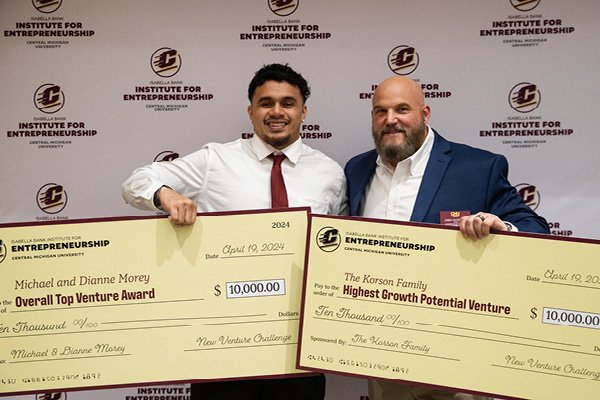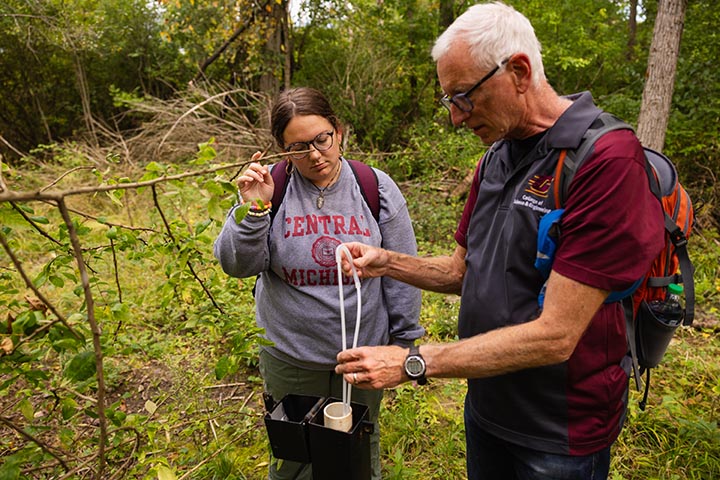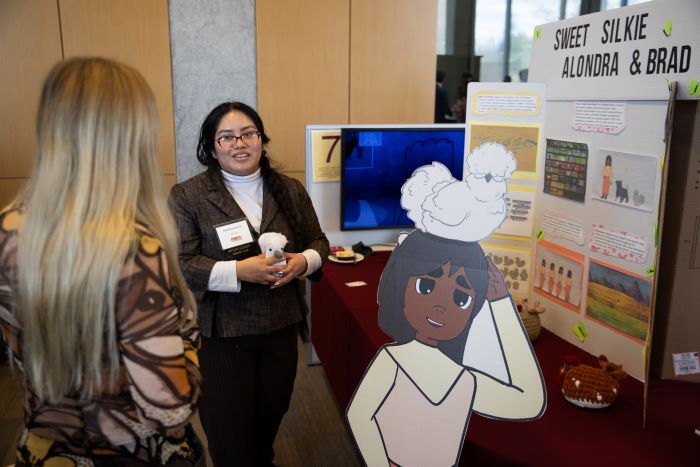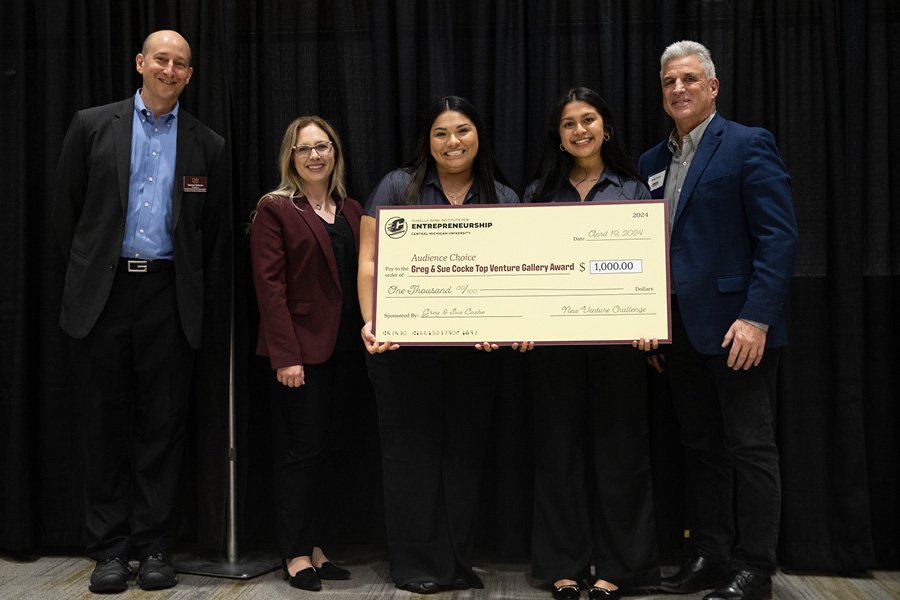
Start up
Passion. Potential. Pitches. Don't miss any of the 2025 New Venture Challenge excitement.
Tune in Friday, April 11 at 1 p.m. for great ideas and fierce competition. Then, join the judges, mentors, spectators and teams as they see who is going home with thousands of dollars in venture financing. The awards broadcast begins at 6:30 p.m. and one team will walk away as the overall best venture.
Central Michigan University’s College of Business Administration is the home of the Isabella Bank Institute for Entrepreneurship and the first Department of Entrepreneurship in the state of Michigan. We are a student-centric hub where experiential, curricular, and external entrepreneurial opportunities intersect.
Our mission is to maximize student success by fostering a campus-wide entrepreneurial mindset that promotes inter-disciplinary collaboration and the creation of new ventures.
We aim to create innovative programming, boost cross-campus and ecosystem collaboration and provide a comprehensive mentoring program.
Our institute provides extracurricular opportunities and is open to all undergraduate and graduate CMU students.
Are you interested in becoming an entrepreneur?
Every journey is unique. Explore the opportunities that interest you.

A Central Michigan University student studying a slow-moving plume of hazardous chemical made a discovery that prompted a state agency to pause its use of a fish-stocking pond.
Eleanor McFarlan was researching the impact of three manmade ponds near Belmont, in Kent County, on the flow of groundwater containing contaminants dumped into a nearby landfill during the 1960s. The contaminants belonged to the family of chemicals called PFAS.
PFAS has seen use in a big range of consumer applications for years. Concern has emerged about its impact on human health, particularly in how they can accumulate in the body. That is in part related to how slowly the chemicals degrade.
The ponds were also used by the Department of Natural Resources for its walleye stocking program. During her research, which took place in 2023, she discovered that the water had higher concentrations of PFAS than during previous testing in 2018.
“When Lemke and I received our sample results, we made sure to contact the DNR about our findings,” McFarlan said. “PFAS are an emerging contaminant of concern, meaning that their behavior in the environment is not well-recognized.
“Understanding how PFAS moves in the subsurface is essential for protecting our natural resources, and this research will hopefully help others to characterize the extent of PFAS contamination in similar sites.”
The concentrations were below what is considered harmful to human health but still high enough to get the DNR’s attention. The agency performed its own tests, including on the fish.
“Although the data indicated no human health risk associated with the walleye program, walleye rearing activities have been suspended at the Belmont Ponds out of an abundance of caution,” said Ed Golder, a DNR spokesman.
The fish would have also been small enough when released that almost all of the PFAS their bodies continued to collect would have come from their new homes rather than the stocking pond, Golder added.
“Eleanor’s study demonstrates the importance of interactions between groundwater and surface water,” said Lawrence Lemke, CMU Professor of Environmental Geology. “If groundwater is contaminated by PFAS or other chemicals, it can affect rivers, lakes, and ponds that it feeds into.”
McFarlan’s research was part of a continuing research effort by CMU students about PFAS deposited in the House Street landfill uphill from the ponds, said Lemke, who teaches in the Earth and Atmospheric Sciences department.
Groundwater containing the contaminant has very slowly migrated towards the Rogue River since. The ponds lie in between the two. The DNR has used them to raise walleye and minnows used to feed the walleye since 2014, Golder said.
Earlier research by CMU students found that the PFAS seeped deep into the ground before starting its migration toward the river, Lemke said.
“In 2020, a team of CMU students built a numerical model to simulate PFAS migration from the landfill over the past 60 years,” Lemke said. “Now we’re beginning to understand where the PFAS will end up in the future.”
The DNR started using the ponds to raise walleye before anyone was concerned about PFAS, but also while the plume from the landfill was already making its way towards them underground, he said.


Explore special opportunities to learn new skills and travel the world.

Present your venture and win BIG at the New Venture Challenge.

Boost your entrepreneurial skills through our workshops, mentor meetups and pitch competitions.

Learn about the entrepreneurship makerspace on campus in Grawn Hall.

Present a 2-minute pitch at the Make-A-Pitch Competition and you could win prizes and bragging rights!

Connect with mentors and faculty who are here to support the next generation of CMU entrepreneurs.

Are you a CMU alum looking to support CMU student entrepreneurs? Learn how you can support or donate to the Entrepreneurship Institute.